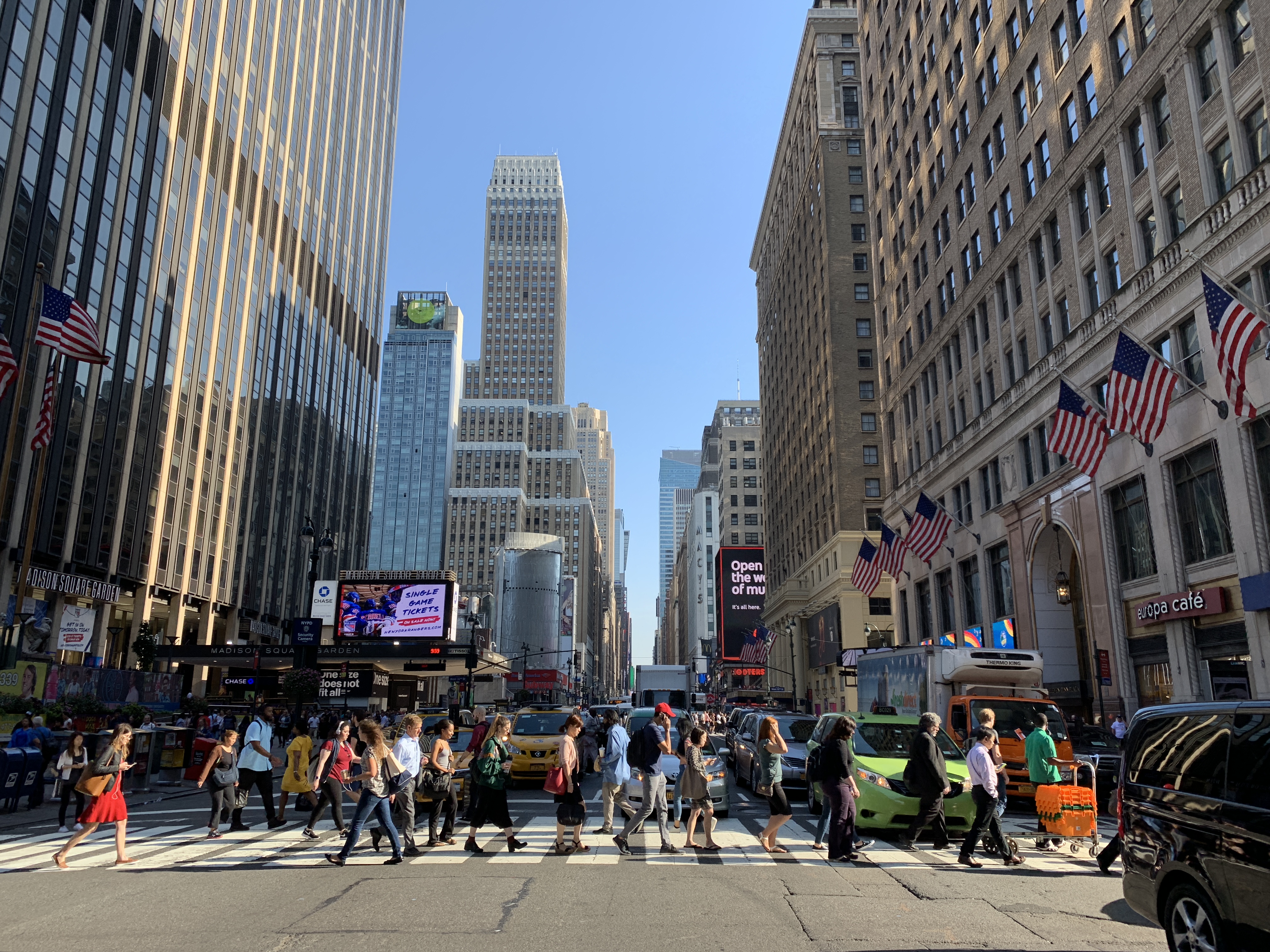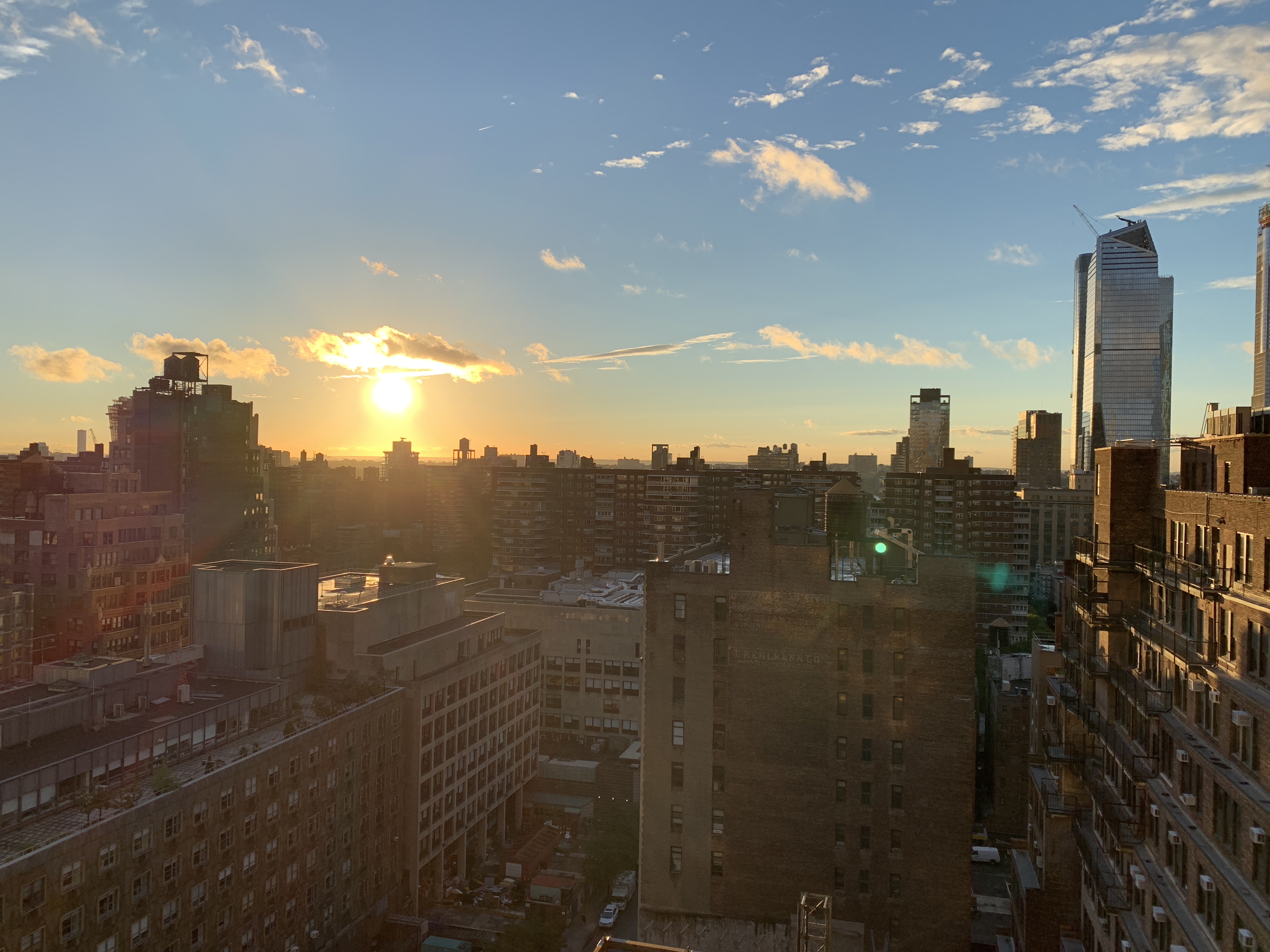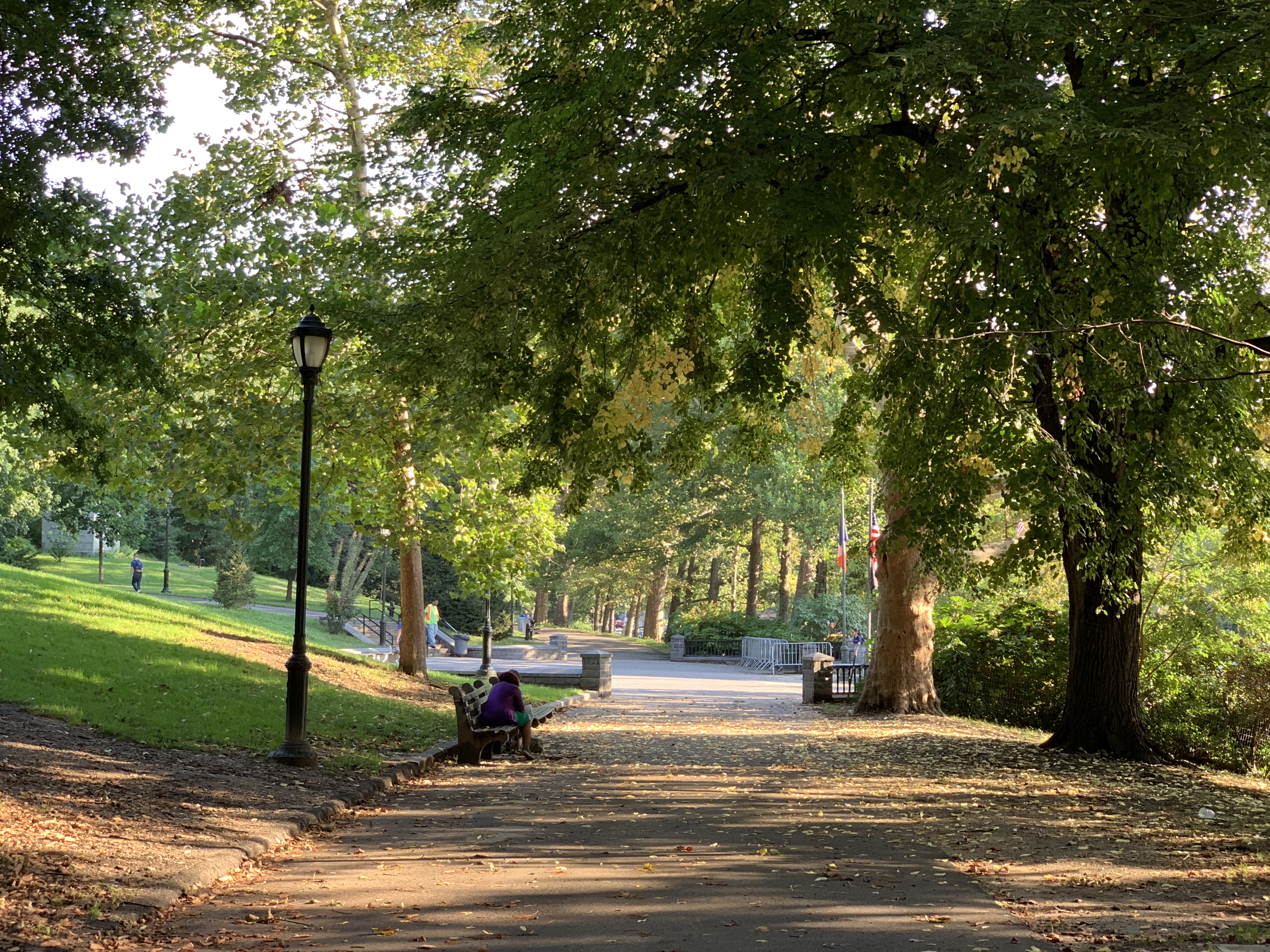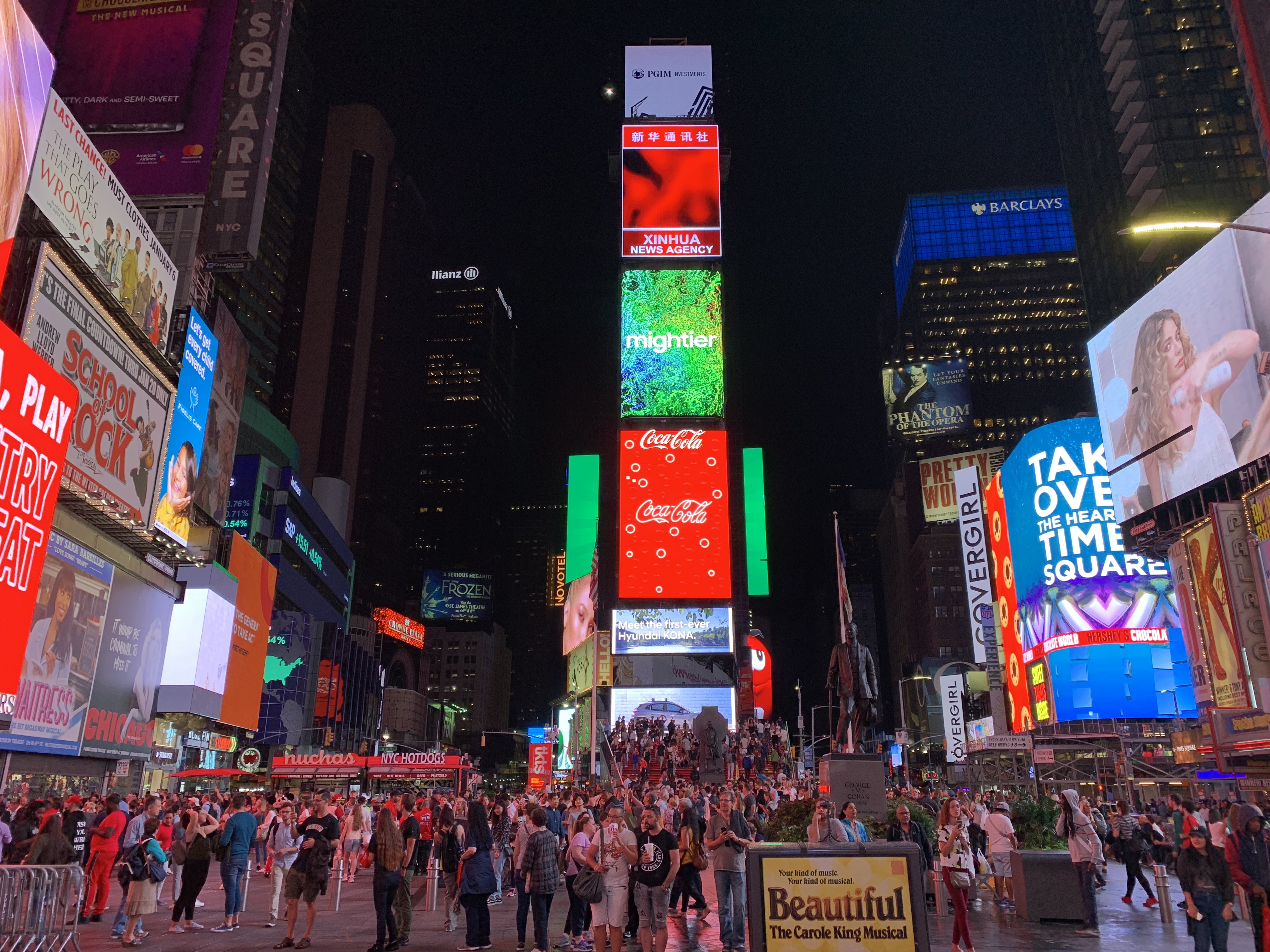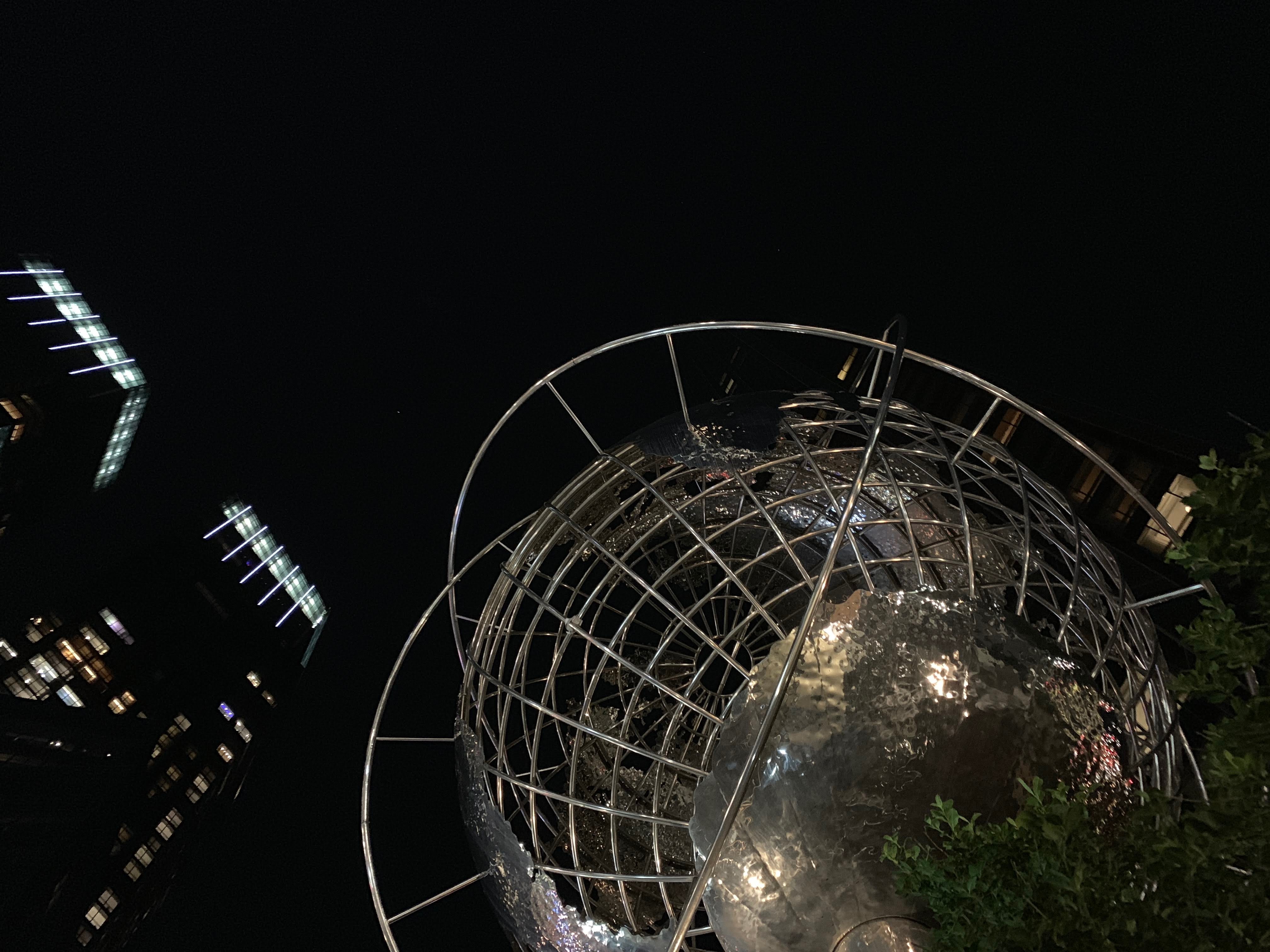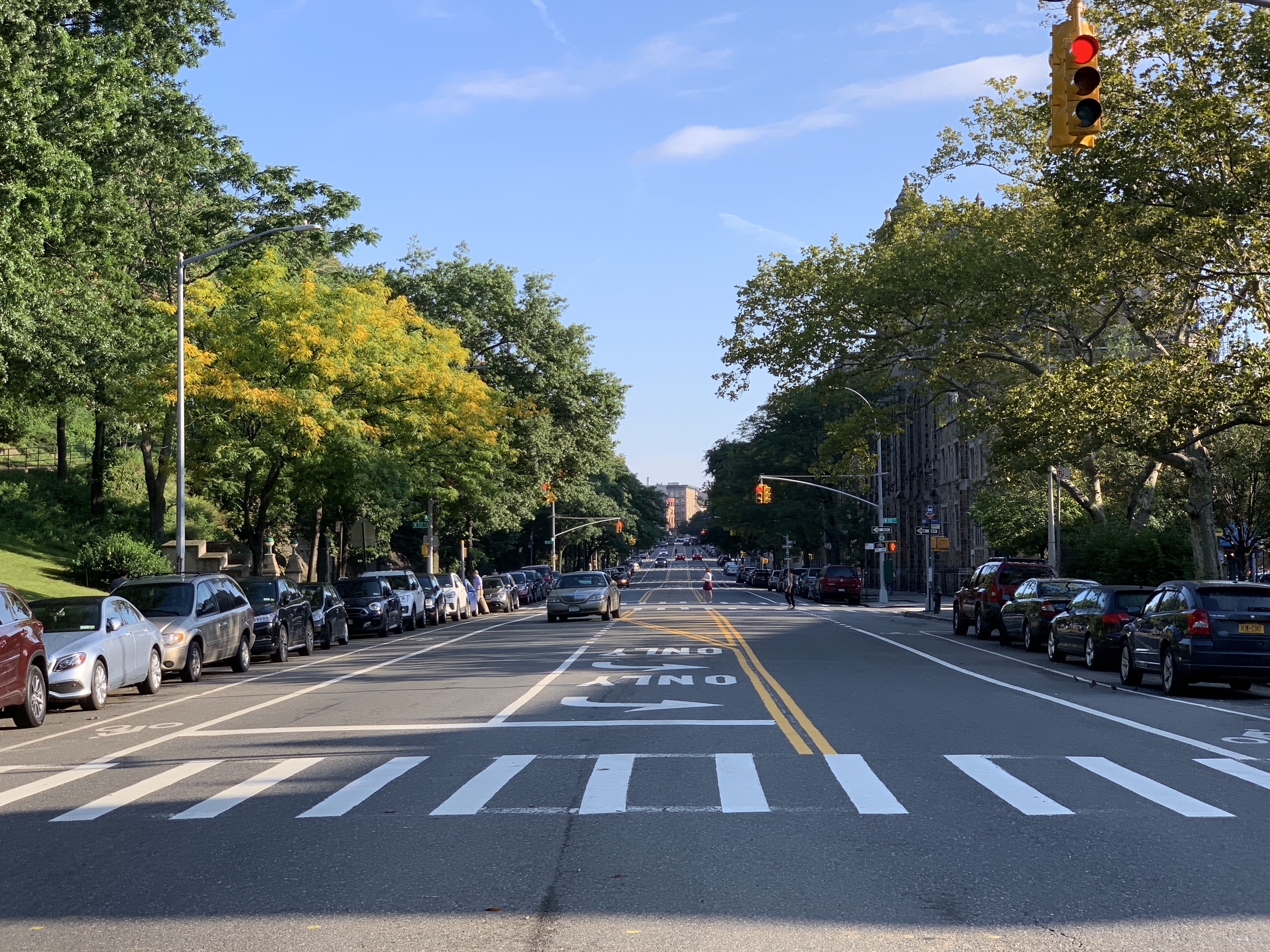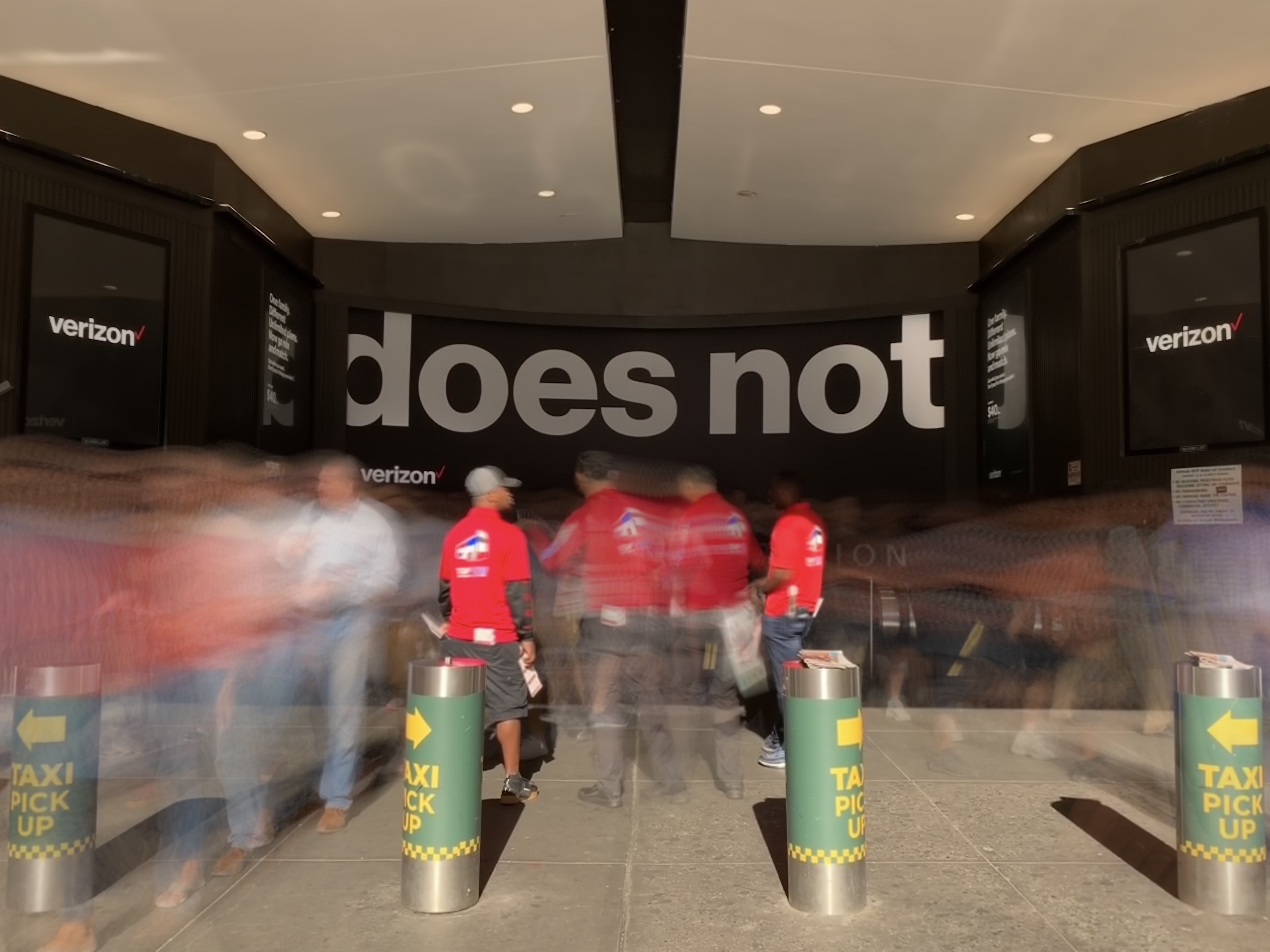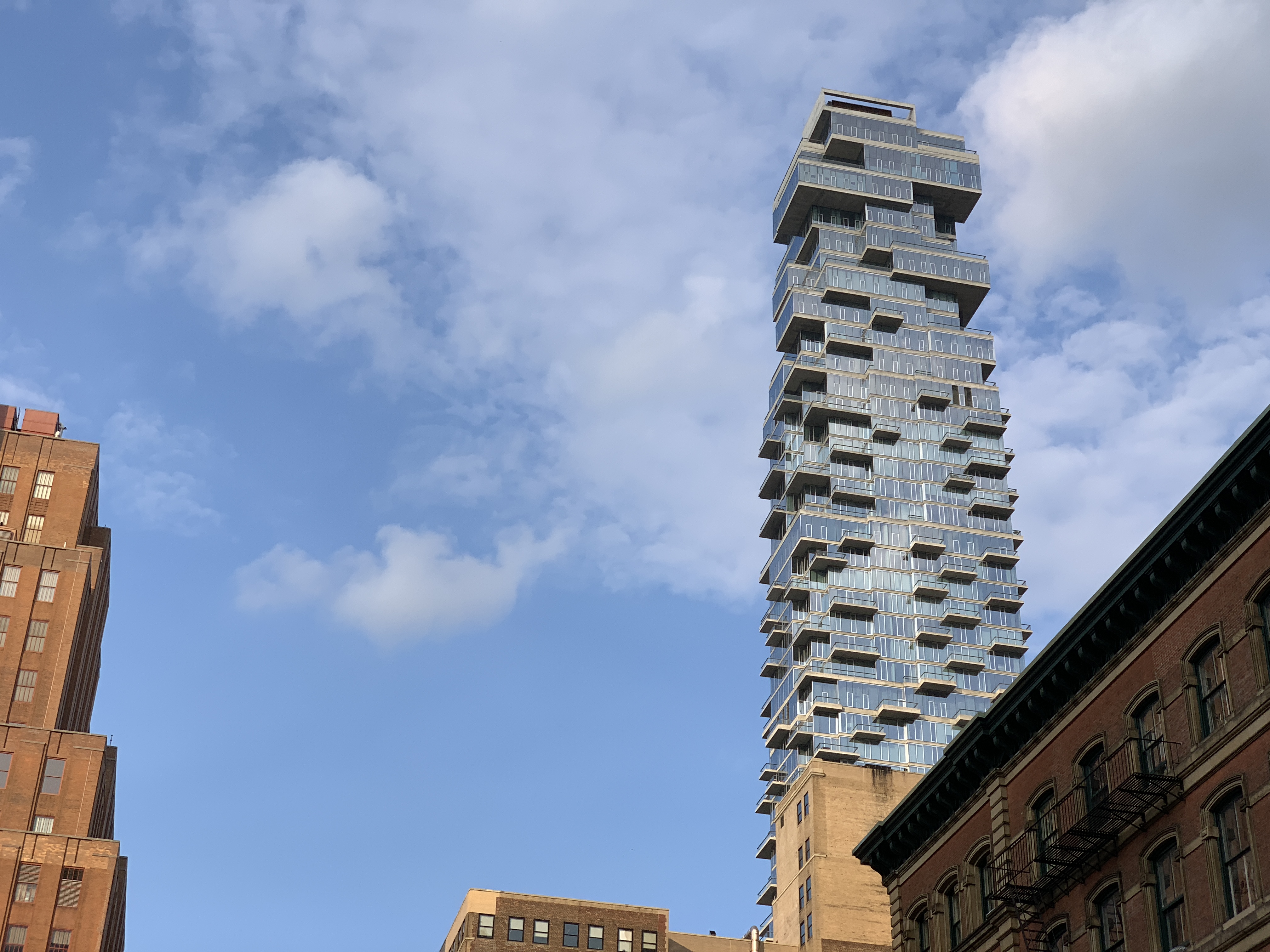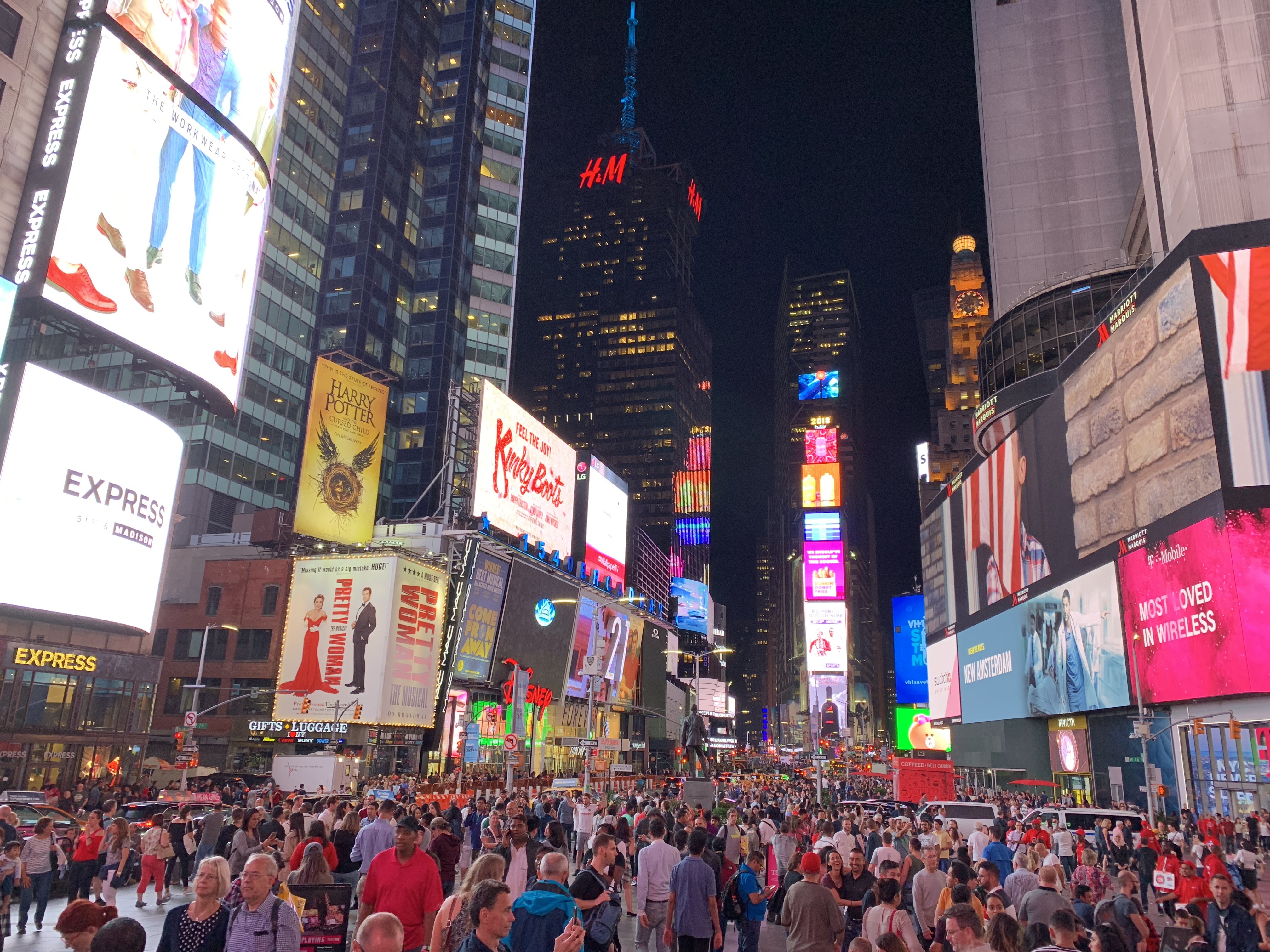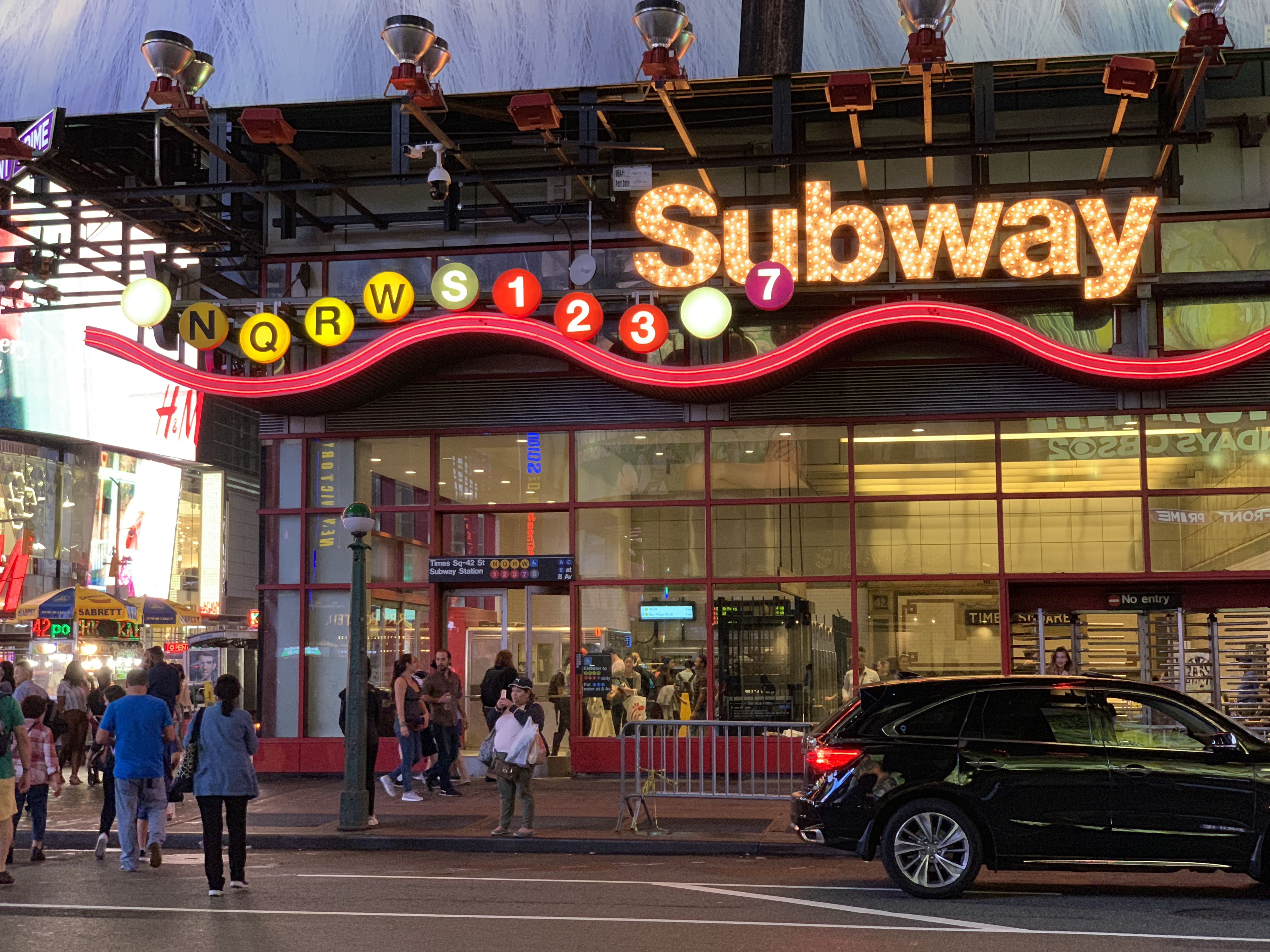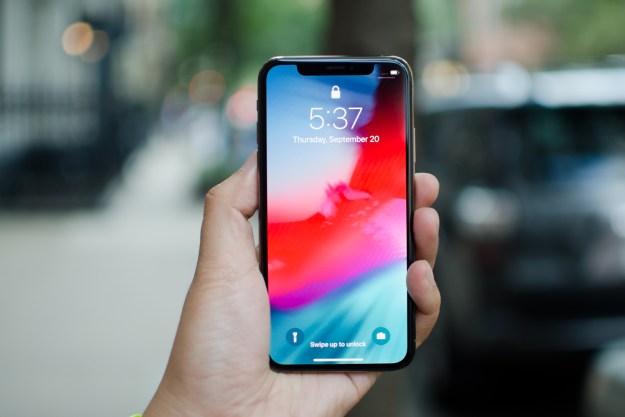
- Gorgeous OLED screen
- Day-long battery life
- Smart HDR is impressive
- Perfect size, beautiful design and build
- Smooth performance
- Missing fast-charging cable, charger, headphone dongle
- Expensive
Is the iPhone XS the most boring iPhone of 2018? Or 2019? It’s clearly overshadowed by the massive, 6.5-inch iPhone XS Max, and the fresh design of the more affordable iPhone XR. But so what? In many ways, the iPhone XS is our favorite. This smartphone a perfectly sized screen that’s usable with one hand, on top of meaningful performance and camera upgrades … all of which makes it the best iPhone yet.
Familiar design
The iPhone XS is almost indistinguishable from an iPhone X. We say nearly, because there are a few tells. If it’s in gold, then it’s the iPhone XS. The new color adds an elegant shine to the edges of the phone, though the rear looks paler — almost pinkish. The back can also slightly change color in different lighting, which is a nice touch.
At the very bottom, you’ll notice Apple has cut the number of holes on the left edge of the phone from six to three. Why? There’s now an antenna band on the bottom taking that space, which is a part of the new 4×4 MIMO (multiple in multiple out) framework to allow faster and stronger internet connectivity. In our own unscientific speed test through the SpeedSmart app (on AT&T’s network), our iPhone X hit download speeds of around 64Mbps, and upload speeds of 14Mbps. In comparison, our iPhone XS managed a 74Mbps download speed, and 17Mbps upload. LTE connectivity is definitely faster, but it was tough to notice an immediate improvement day to day.
Over on the back, the dual-camera module is a hair taller on the iPhone XS. We mention these two minor changes mostly because you may not be able to use old iPhone X cases on the XS. We’ve tested a handful, and while some fit without a problem, others didn’t. Thankfully, there are plenty of iPhone XS cases available at a range of prices, and we’ve rounded out our favorites in a handy guide.
Everything else is more or less the same — that is, if you’re coming from an iPhone X. The glass is purportedly more durable than ever, but it’s still a fingerprint magnet if you choose to forgo a case. The stainless steel frame feels nice to the touch, and it’s also stronger than the aluminum used on devices like the iPhone XR or iPhone 8 Plus.
It’s elegantly minimal, made with high-quality materials that scream exquisite, and fits perfectly in our palm.
But for many people, the iPhone XS will be their first foray into using an iPhone without a home button, which means there will be a period of adjustment to get used to the gesture navigation system. It shouldn’t take too long, because we think it’s a much more intuitive way of interacting with iOS; it’s far better than the new gesture controls introduced in Google’s Android 9 Pie.
It may also take some time getting used to Face ID, which lets you unlock the phone just by glancing at the screen. Apple said Face ID is far more secure than its old Touch ID system, and that’s all made possible due to the TrueDepth camera and sensors in the notch at the top of the screen. With the iPhone XS, Face ID is slightly faster, and it’s ever-so-slightly noticeable through direct comparisons with the iPhone X. Face ID is leaps and bounds better than when it was first introduced last year, and we’ve fewer issues unlocking the phone in the dark. We’re genuinely starting to enjoy using it more than fingerprint sensors on other phones, and now with iOS 12 you can set up someone else’s face as an alternate ID as well.

The iPhone XS is our favorite-sized iPhone. It’s elegantly minimal, made with high-quality materials that scream exquisite, and fits perfectly in our palm. But if it’s too small for you, check out our iPhone XS Max review for our thoughts on one of the biggest iPhones to date. And of course, read our iPhone XR review to tide you over until it goes on sale in October.
Beautiful OLED display
The 5.8-inch screen on the front is the same size as the iPhone X, but unlike last year, the iPhone XS is the smallest in the current crop of 2018 iPhones. The iPhone XR has a 6.1-inch screen, and the iPhone XS Max has a 6.5-inch screen. That being said, the body of the iPhone XS is only slightly bigger than the iPhone 8, iPhone 7 or iPhone 6, all of which had 4.7-inch screens. You’re getting a much bigger screen, for a marginally larger body. We think it’s the perfect size: big enough to make watching movies and videos feel immersive, but not so big that it’s difficult to use one handed (unlike the XS Max).
The OLED screen is absolutely gorgeous. It’s plenty colorful, without looking oversaturated, and the OLED really helps make blacks look so deep that it’s hard to see the notch at the top if you use a dark wallpaper. The screen has 2,436 x 1,125 screen resolution (458 pixels per inch), and it’s sharp. Movies and shows like Ready Player One and Iron Fist look incredibly crisp, detailed, and colorful, especially thanks to support for Dolby Vision and HDR10. It all sounds better too, as Apple improved the speakers for wider stereo sound, though they’re not that loud when used outdoors in busy environments. This is really enough screen for most people, but if you frequently binge watch shows on your phone, you may want the extra screen real estate the iPhone XS Max offers.

We never had a problem viewing the screen at any angle on the XS, and the screen also managed to get bright enough to see outdoors (though we did have to crank the brightness to the max). Apple’s True Tone technology makes a welcome return — it matches the tone of the screen to the ambient lighting in your surrounding — which makes the screen pleasant to look at in all kinds of environments.
Stellar performance, and iOS 12 brings welcome improvements
The iPhone XS is powered by Apple’s A12 Bionic processor, which is Apple’s first mobile processor built using a 7 nanometer process. It houses 6.9 billion transistors, and Apple said it can deliver stronger performance, while still being more efficient than last year’s A11 Bionic. There’s a Neural Engine inside again for machine learning tasks, but Apple said it now has six more cores (for a total of eight) that allow it to process 5 trillion operations per second. Those are mind-boggling numbers, but at the end of the day all you need to know is that this is the most powerful smartphone in the world right now.
This is the most powerful smartphone in the world right now.
Whether it’s an augmented reality (AR) game like AR Robot, a graphically-intensive game like Asphalt 9: Legends, or simply swapping between multiple apps as you juggle different tasks, you won’t have issues running almost any app or service on the iPhone XS.
Here are a few benchmark results:
- AnTuTu 3DBench: 334,325
- Geekbench 4 CPU: 4,831 single-core; 11,443 multi-core
These numbers are the highest we’ve seen to date from any smartphone, with the closest coming from Samsung’s Galaxy Note 9 with its 273,992 AnTuTu score. Benchmarks aren’t the best measure of real-world performance, but these numbers give you a strong idea of the power inside Apple’s new iPhones.
Paired with this buttery smooth performance is the latest version of Apple’s mobile operating system — iOS 12. We’ve covered all the new features in the update, but our favorites include the new grouped notifications system, which makes them far easier to manage; Memojis, which let you create Animojis based on your own avatar; and Siri Suggestions, which genuinely offers up helpful suggestions. You can read our full impressions in our iOS 12 review.
Improved camera
While on a surface level it may seem as though Apple hasn’t changed the camera from the iPhone X, there are some significant under-the-hood improvements in the iPhone XS. You get the same dual-camera system: A 12-megapixel standard lens with a f/1.8 aperture, paired with a 12-megapixel telephoto lens with a f/2.4 aperture. Both have optical image stabilization, and you can capture 4K video up to 60 frames per second. The image sensor is now larger, however, which helps with better low-light photos.
As usual, there’s almost zero lag when trying to snap a photo. The camera app is quick to launch, easy to operate, and it snaps photos fast. Images are often well detailed with good color, but there are two areas where dramatic improvements are visible. The first is low light — take a look at the picture below. The colors on the iPhone XS photo are far more natural and appealing, there’s less grain than the iPhone X photo, and bright lights don’t look overexposed on the XS photo.
That last bit — where lights on the XS photo don’t look overexposed — is due to a new feature called Smart HDR. Essentially, the camera snaps more photos than ever before when you tap on the shutter button. That includes taking photos at three different exposures, and then combining them all to create the best photo that doesn’t blow out bright lights, or underexpose dark areas. It’s great for high-contrast scenarios, and one of the best examples showing off the difference can be seen with the photo below.
There are a few spots in the iPhone X photo that are too blown out, such as the subject’s forehead and the background. Smart HDR on the iPhone XS is capable of capturing more photos at different exposures to avoid that problem, allowing for a much more natural-looking photo that’s just as detailed, with strong color accuracy. It’s an excellent addition, and it easily improves the quality of photos coming out of the iPhone XS dramatically.
Apple also said it improved Portrait Mode and Portrait Lighting with the new iPhone XS, but the improvements we’ve found stem from the new Smart HDR feature, and the larger sensor which adds less grain in low light. Apple still has some of the best color accuracy here, but we think the Google Pixel 2 still crushes the competition in general with Portrait Mode photos. While we don’t see this as much with the rear camera on the iPhone XS, there are still issues with Portrait Mode accurately identifying the edges of a subject, especially with hair, for Portrait Mode selfies.
Alongside the improved Portrait Mode is a new feature called Depth Control. It lets you change the intensity of the blur on any Portrait Mode photo taken on an iPhone XS or XS Max. You can add a stronger blur, or remove it completely. It’s a neat feature that lets you customize exactly how you want your photos to look before sharing them.
Apple said it also improved the dynamic range for videos captured on the iPhone XS, as well as low light performance (up to 4K 30 FPS), and the results are indeed excellent. The stabilization continues to be strong, but it’s the colors that impress, as it looks incredibly natural and true to life. There’s also stereo recording available, which is a nice addition.
All told, the iPhone XS has an excellent camera with genuinely noticeable improvements over last year’s iPhone X. Does it take the crown as the best camera phone available on the market? We’ll be doing more extensive testing with a range of phones to find out.
Day-long battery life
The iPhone XS will offer up about a full day of battery life, and not much more with the 2,658mAh battery inside. After a day of heavy testing, including music streaming, watching videos, taking lots of photos, and running benchmarking apps, we totaled nearly six hours of screen on time (the amount of time the screen has been on), which is great. That meant the iPhone XS started at 100 percent at 7:30 a.m. and hit 24 percent by 5:30 p.m., so we toggled on low power mode, and it hit 20 percent by 6 p.m.
While that’s with heavy usage, on average you can expect to end a work day (around 6 p.m.) with 35 percent remaining or more if you haven’t used your phone too much. We don’t think this battery will take you to a second day of usage (except for very light usage scenarios), which is disappointing.
The iPhone XS does support faster wireless charging due to a tighter coil design, and we’ve certainly seen it charge up a little faster on a pad than the iPhone X, but we wish Apple included a fast-charging cable in the box. You need to buy the USB-C to Lighting cable separately for $19, and a 30W charger for $49. That’s an extra $68 in accessories, while almost every Android manufacturer gives you both in the box. Perhaps even more unforgiveable, you’ll need to spend $9 just to use standard headphones with the XS, because Apple has omitted the Lightning to 3.5mm adapter this year. This is an outstanding phone, but Apple’s greedy nickel-and-dime cash grabs are getting out of control.
Price, availability, and warranty information
The iPhone XS starts at $999 for the 64GB model, and goes all the way up to $1,349 for the 512GB storage option. It’s available today from a variety of retailers, carriers, as well as the Apple Store. For discounted offers, check out our compilation of the best iPhone deals or the best smartphone deals if you want more options outside Apple.
Apple offers a standard one-year warranty that covers manufacturer defects.
Our Take
The iPhone XS is a modest upgrade over the iPhone X, but it’s still the perfectly-sized iPhone that delivers stellar performance, and an excellent camera.
Is there a better alternative?
Yes, the iPhone XS Max. But that’s only if you want the 6.5-inch screen, which may prove too cumbersome for some. The cheaper alternative is the iPhone XR. It has the same A12 Bionic processor, a single-lens camera, Smart HDR, Portrait Mode, as well as Depth Control — all at a cheaper $750 price tag.
If you don’t mind swapping to Android, we recommend waiting to see what’s in store next month as there are several handsets gearing up to launch such as the LG V40, the Google Pixel 3, the Sony Xperia XZ3, the OnePlus 6T, and more.
How long will it last?
The iPhone XS is wrapped in glass, and no matter how durable Apple says it is, it’s still prone to shattering when dropped. We recommend buying a case to protect your pricy investment. The phone is IP68 water resistant, which is an improvement, and it means it can stay submerged up to 2 meters for 30 minutes. Apple delivers software updates to its smartphones for several years, so it’s safe to say this phone will last you four to five years, maybe more, but you may need to replace the battery at some point when it starts to degrade.
Should you buy it?
Yes. If you want the best phone from Apple that you can use with one hand, get the iPhone XS. If you’re wary on the $999 price tag, then we recommend getting the iPhone XR.





